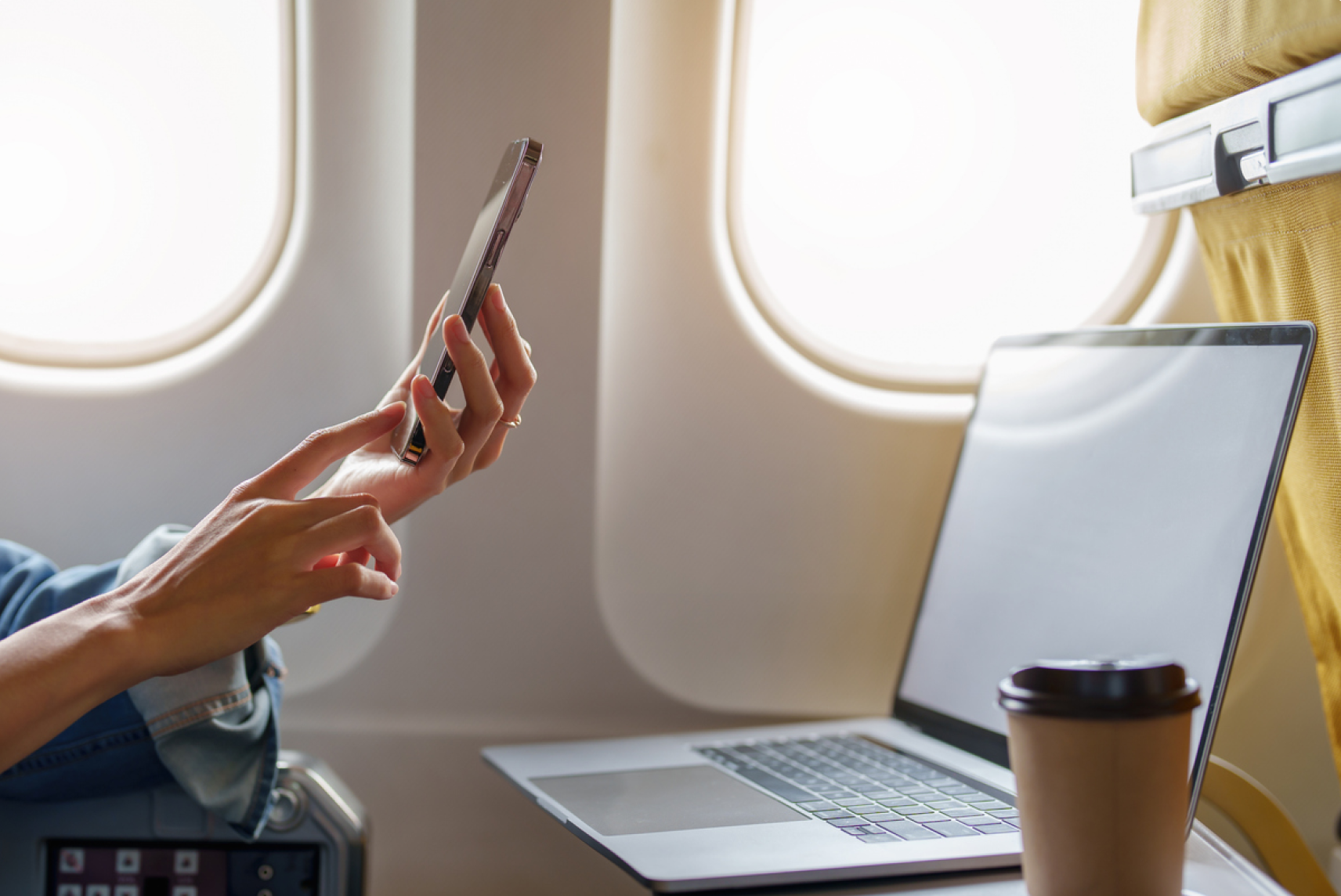Make sure you’re protected no matter where you connect.
In-flight Wi-Fi comes with the same risks you’d find when connecting to any public Wi-Fi network. Unfortunately, in our haste to keep connected on a long flight, we often don’t give it a second thought. But precautions should be taken to safeguard against common threats.
The best solution if you want to browse online while mid-air is a VPN. A VPN will securely encrypt your traffic, keeping it safe and private. Here I’ll show you the potential risks involved with in-flight Wi-Fi and how a VPN is the perfect tool to protect yourself.
Check out my list of best VPNs to keep you safe whether you’re up in the sky or down on land.
Is in-flight Wi-Fi secure?
It’s important to stay connected while traveling. During a long flight, you can use the down time and convenience of in-flight Wi-Fi to navigate your destination with online maps, keep in touch with friends and family, or search for the best restaurants to hit up when you land.
Public Wi-Fi, whether in-flight or at your local corner cafe, can come with risks though. If you connect to an unsecure network you may be vulnerable to hackers. In fact, a recent Forbes Advisor survey found that 43 percent of those surveyed have had their online security compromised while using public Wi-Fi.
There are a few types of potential attack methods that might be used against you while trying to connect to in-flight Wi-Fi. The most common is called a “Man-in-the-middle” attack. It typically involves a hacker compromising a public Wi-Fi router and intercepting data traveling between the user and the network.
Another form of a man-in-the-middle attack is called an “Evil twin attack.” Here it’s common to see an attacker create a fake Wi-Fi hotspot with a similar name to the real Wi-Fi network to lure unsuspecting users—think “Frontier_01” instead of the official “Frontier.” These types of attacks typically require close physical proximity and therefore make crowded airplanes a good target.
Just such an attack happened in Australia earlier this year when a man was caught setting up fake Wi-Fi networks on flights. When unsuspecting users connected to his hotspots, they were taken to a fake webpage that required them to sign in with emails or social media logins, which he then copied and stole.
When using any kind of public Wi-Fi network it’s important that you safeguard yourself. While some cautious security experts would advise that you never connect to in-flight Wi-Fi, this is impractical for many people. By taking just a few precautions you can significantly reduce the chance of accidentally compromising your data on these networks.
How to stay safe while using in-flight Wi-Fi
Despite the potential hazards of connecting to in-flight Wi-Fi, there are some easy steps you can take to protect yourself. First and foremost, you should always make sure you’re connecting to the correct Wi-Fi network. If you’re unsure or don’t know the airline’s network name, it’s best to just ask a cabin attendant.
The next best step is to use a VPN with any and all public Wi-Fi connections—even those at 35,000 feet. A VPN will secure your connection and run all of your traffic through an encrypted tunnel so that your data is kept private from potential attackers.
Remember that I mentioned how many people have had their online security compromised while using public Wi-Fi? That same survey showed that only 40 percent of people regularly use a VPN while connected to public Wi-Fi. That leaves a large group of people who are unaware or actively choosing to ignore the risks. Don’t be one of these people.
A VPN, such as any of those on my list of the best VPNs, is an affordable and trustworthy solution. Alternatively, you could opt for a VPN router such as ExpressVPN’s Aircove Go or Deeper Connect’s Air Portable VPN Router to seamlessly connect multiple devices to a VPN while using public Wi-Fi.
These work by first establishing a connection to the public network and then creating a new secure network via the router. You can then connect all of your devices to this router network and they will automatically run through a VPN.
Whichever way you choose, remember that taking just a couple of minutes and investing a few dollars into the proper precautions can help save you a whole lot of trouble down the line.




